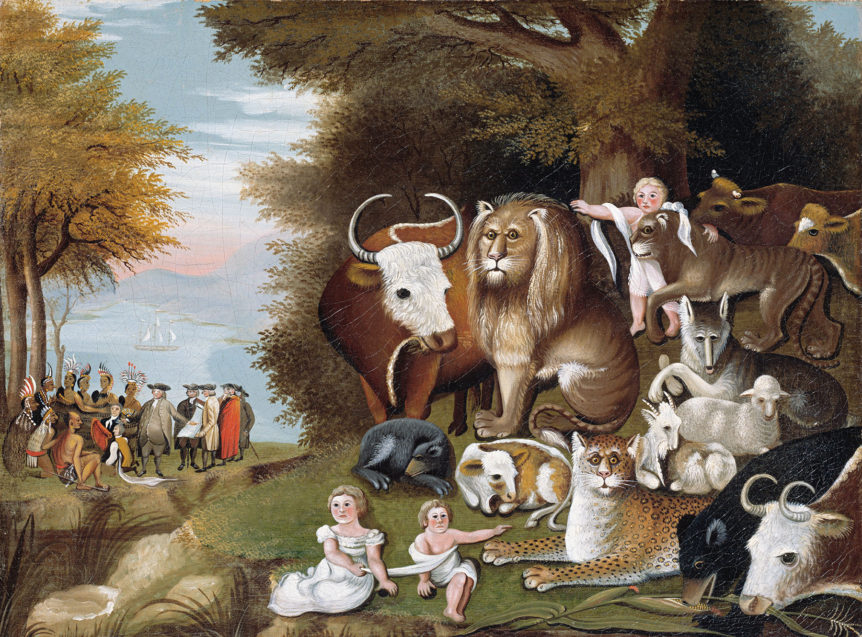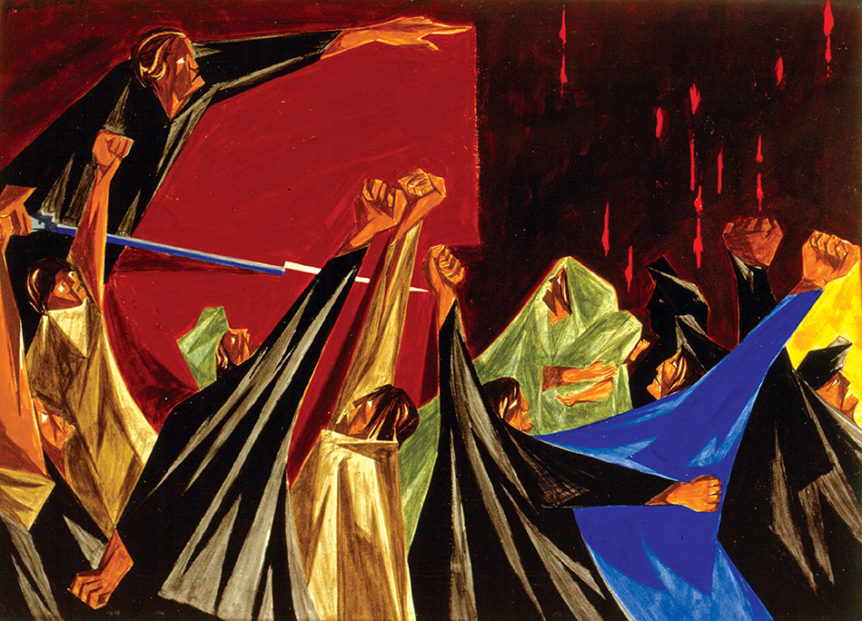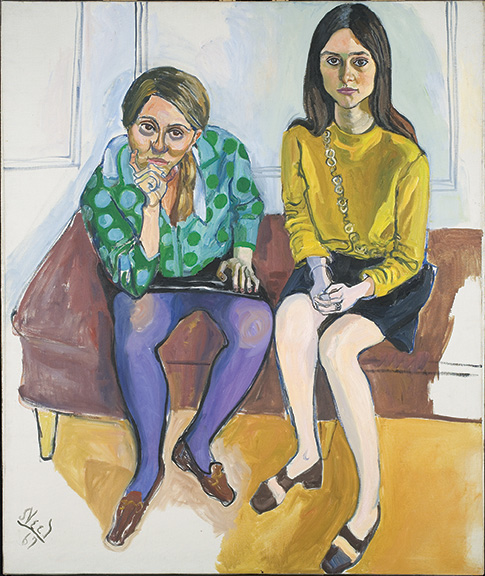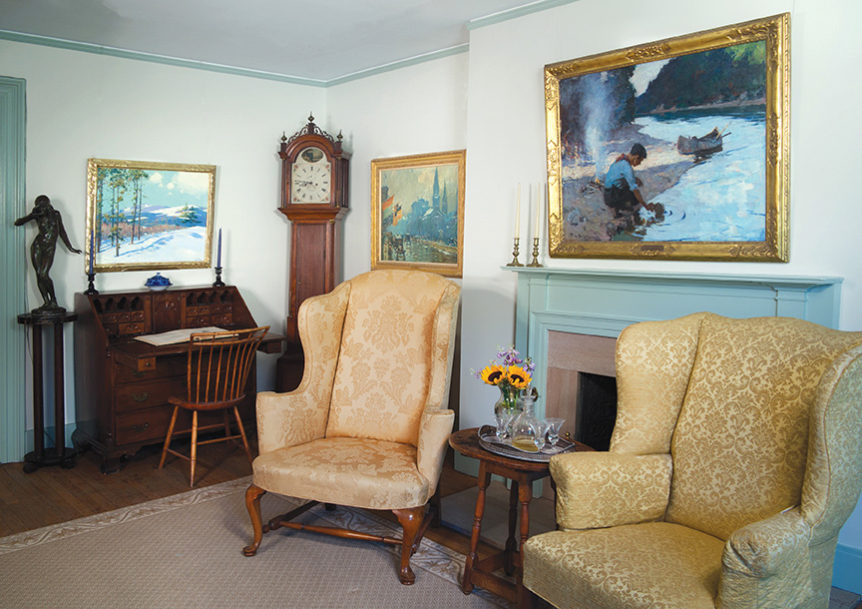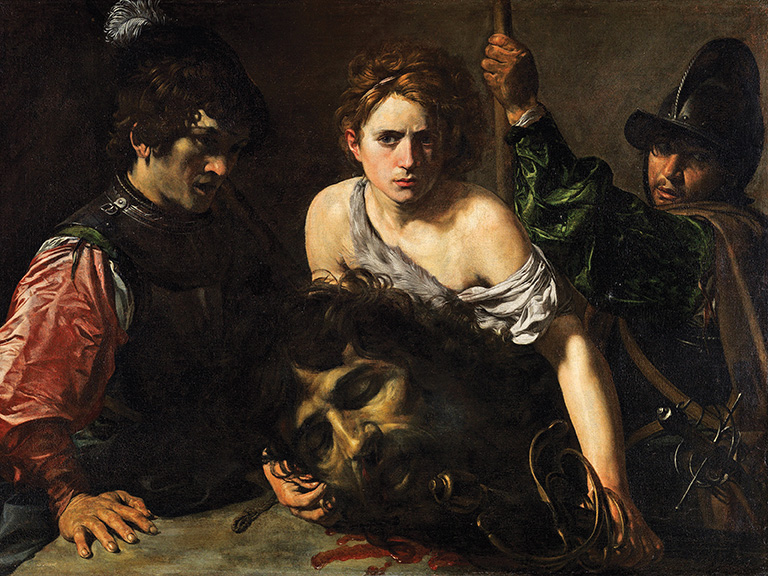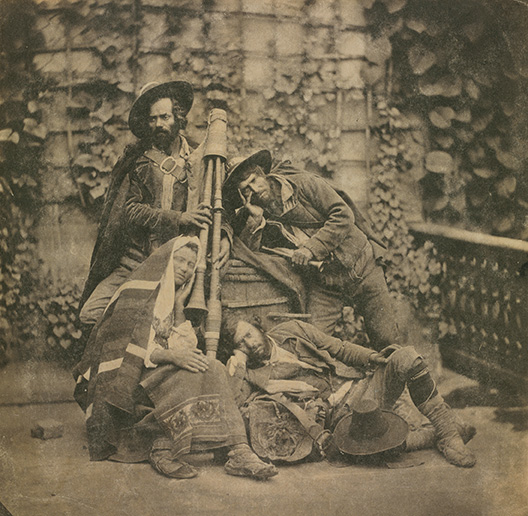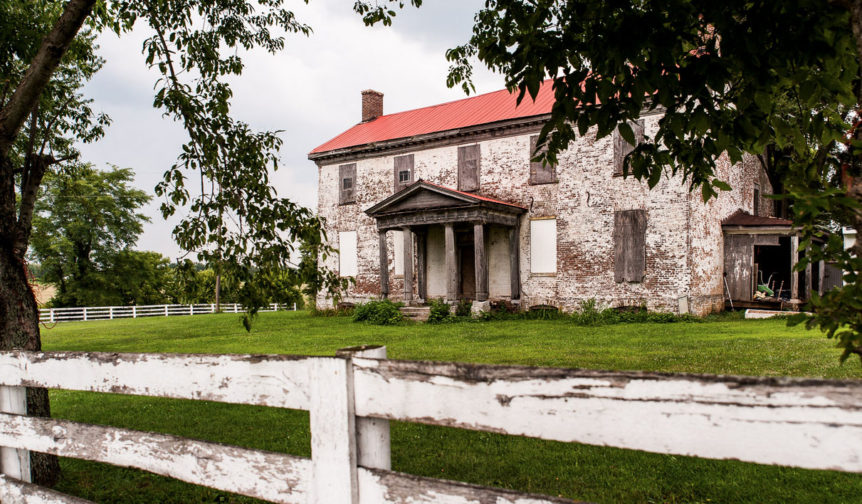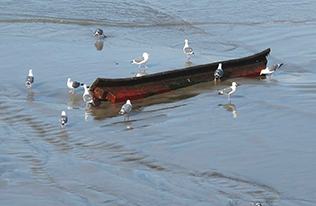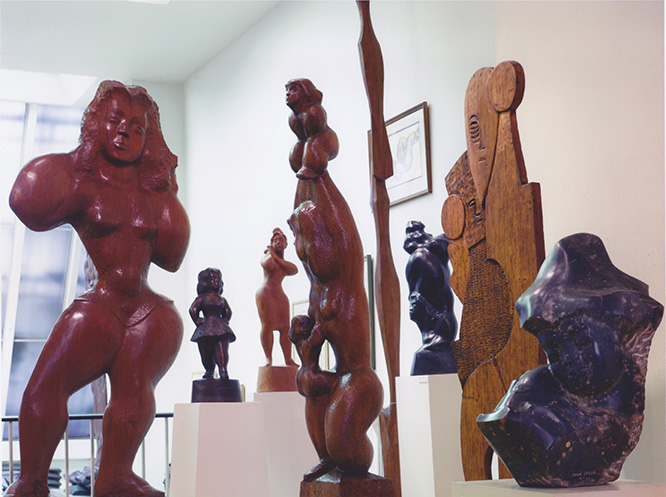The exhibition American Folk Art: The Art of the Common Man in America, 1750–1900 was held at the Museum of Modern Art in New York City from November 30, 1932, through January 14, 1933. Presenting American folk art as part of a continuous artistic tradition reaching back to the eighteenth century, it was the most comprehensive, illuminating display of the subject held up to that time.
Missing pieces
Scholars hope to reunite all thirty paintings in Jacob Lawrence’s Struggle series, his epic of early American history. But the whereabouts of several panels is unknown.
A new look for the Davis at Wellesley
New England is chockablock with exceptional academic art museums, from the Yale University Art Gallery to those at Colby and Bowdoin Colleges in Maine. A lesser-known gem that has recently taken on new sparkle is the Davis Museum at Wellesley College, designed by Pritzker Prize–winning architect Rafael Moneo in 1993, where a nearly three-year reinstallation of the collection has just been completed.
Dealers’ Choice: The noteworthy art collection of gallerists Abbot and Marcia Vose of Boston goes on display
The term “old school” could almost have been invented to describe the Vose Galleries, that venerable Boston art institution now celebrating its 175th year in business. In honor of that almost unprecedented milestone for an art gallery, the two owners, Abbot “Bill” and Marcia Vose, who have been married for forty-four years, have decided to put on display a selection of their private collection of American impressionists, assembled over the past four decades, as part of an exhibition titled Crosscurrents: The Colonies, Clubs & Schools That Established Impressionism in America.
Artistic Affinities: On the edge of something new at the Shelburne Museum
Electra Havemeyer Webb, the founder of the Shelburne Museum, was a collector of astonishingly wideranging interests. Her diversity of tastes is reflected in holdings that include carriages, decoys, weather vanes, and antique bedcoverings, as well as paintings by Manet, Courbet, and Monet, and the steamboat Ticonderoga. Yet with its pastoral Vermont setting and a campus dotted with examples of vernacular New England architecture, the museum is primarily associated by many with its outstanding collection of folk art and Americana.
An old master, newly arrived: Valentin de Boulogne at the Metropolitan Museum of Art
A rather depressing article appeared recently in the New York Times concerning a steep and sudden decline in the market for old master paintings. “At a time when contemporary art is all the rage among collectors, viewers, and donors,” Robin Pogrebin wrote, “many experts are questioning whether old master artwork—once the most coveted—can stay relevant at auction houses, galleries, and museums.” There can be a no more thunderous rebuttal to the notion that old masters are irrelevant than the new exhibition of Valentin de Boulogne at the Metropolitan Museum of Art.
From specimens to souls: The evolution of early portrait photography at the Cleveland Museum of Art
Every photographic portrait confers on its subject some degree of immortality. We take for granted the ability to know what a person looks like, since images of family, friends, and famous strangers dead and alive are at our fingertips through a Google Images or Facebook search. But until 1839 only the wealthy could have a likeness recorded, share it with others, and leave it behind for future generations.
Finding beauty in decay: The documentary photography of Sherman Cahal
For almost twenty years Sherman Cahal has traveled the Middle West and Appalachia, photographing residential, industrial, and commercial buildings that exist in various states of disrepair and decay, creating a visual record that is, of course, sad, but that also invokes the peculiar appeal of old, worn things.
Case History: Lost and found
How a tsunami-tossed pair of sacred Japanese artifacts found their way across the Pacific and back home again. Surrounded by seagulls, the first kasagi discovered on the beach in Oceanside, Oregon, in March 2013. Photograph by Judson Randall. A wooden plaque mortised into the second kasagi to wash up in Oregon bore the name of the donor, Toshimi Takahashi, and …
Sculpting Joy: Experiencing the artist and his art at the Renee and Chaim Gross Foundation
In the entranceway to the Renee & Chaim Gross Foundation, located in a town house in historic Greenwich Village, two sculptures by Chaim Gross welcome visitors to the place where he worked and lived. Together, they announce the hallmarks of his art. The first is Family of Five Acrobats (1955), a bronze sculpture with a black patina that stands …

